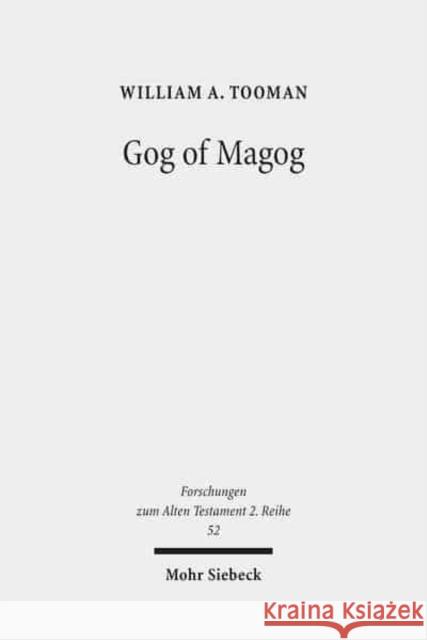Gog of Magog: Reuse of Scripture and Compositional Technique in Ezekiel 38-39 » książka
Gog of Magog: Reuse of Scripture and Compositional Technique in Ezekiel 38-39
ISBN-13: 9783161508578 / Angielski / Miękka / 2011 / 343 str.
The Gog Oracles' (Ezek 38-39) reuse of antecedent scripture is crucial to their purpose and meaning. The pattern of continuous allusion in the Gog Oracles reflects something more than a writer saturated with scriptural idiom. It is a practice of disciplined and deliberate reference to select texts on select themes. William A. Tooman shows that recognizing the volume and density of scriptural reuse within the Gog Oracles is indispensable for understanding these chapters' role within the book, its composition, and its place within Second Temple literature. A close examination of the methods, effects, and motives of scriptural reuse that are evident within the Gog oracles reveals that these chapters are a unified composition that was crafted as a supplement to a book of Ezekiel, in order to fill gaps in the book's message and to harmonize the book with other traditions of prophetic revelation.
The Gog Oracles (Ezek 38-39) reuse of antecedent scripture is crucial to their purpose and meaning. The pattern of continuous allusion in the Gog Oracles reflects something more than a writer saturated with scriptural idiom. It is a practice of disciplined and deliberate reference to select texts on select themes. William Tooman shows that recognizing the volume and density of scriptural reuse within the Gog Oracles is indispensible for understanding these chapters role within the book, its composition, and its place within Second Temple literature. A close examination of the methods, effects, and motives of scriptural reuse that are evident within the Gog oracles reveals that these chapters are a unified composition that was crafted as a supplement to a book of Ezekiel, in order to fill gaps in the book s message and to harmonize the book with other traditions of prophetic revelation.











